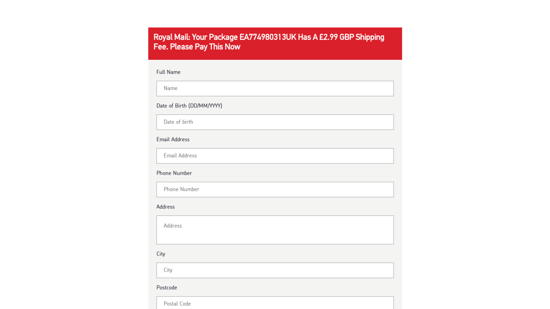 New data from CheckPoint highlights how scammers are using simple shipping-related social engineering scams to trick victims into giving up personal information and credit card details.
New data from CheckPoint highlights how scammers are using simple shipping-related social engineering scams to trick victims into giving up personal information and credit card details.
In many cases, all it takes it a convincing Sender name in an email and reasonably recognizable life scenario to trick a user into falling prey to a phishing scam. According to CheckPoint, March of this year saw a massive 645% increase in the number of scams in the wild.
The scams identified varied in tactics, with some seeking to gather credit card information, as shown below, while others attempted to install malware by means of malicious links.

Source: Checkpoint
Nearly 140 malicious Royal Mail-related websites were identified by CheckPoint that utilized convincing-looking forms to get users to submit their personal information.
In some cases, these scams were focused on individuals, while a wave of Royal Mail-themed attacks targeted businesses. According to CheckPoint, one out of every 35 organizations in the UK were the target of such attacks.
The impersonation of the Royal Mail provides the bad guys with a broad opportunity to find many victims. We saw this same kind of attack in the U.S. late last year pretending to be the USPS or Fedex.
It’s important for individuals and employees to remain vigilant – even when an email is coming from a well-known service. If you’re not expecting an email from that postal carrier, business, bank, etc., don’t engage with it. Users can undergo continual Security Awareness Training to increase their ever-present state of cyber-vigilance, helping to better protect the organization from phishing based attacks.
 Here's how it works:
Here's how it works:




